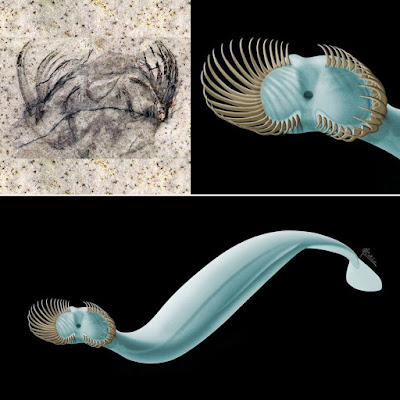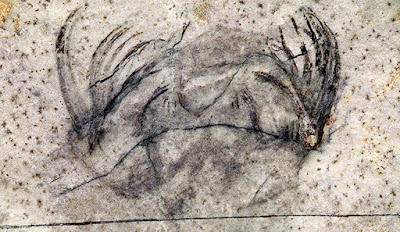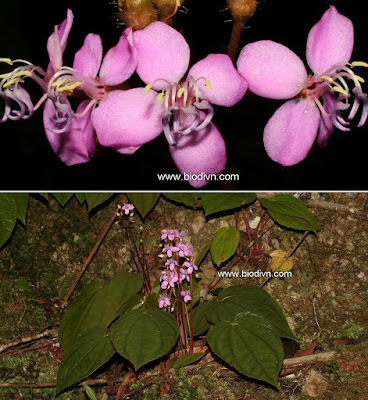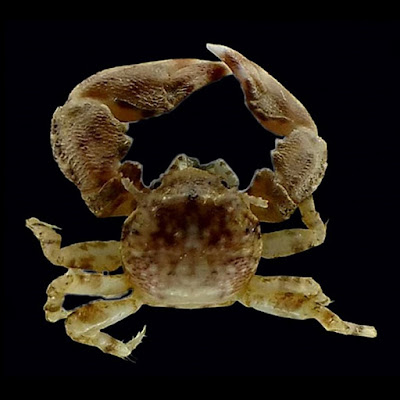[Most Recent Entries] [Calendar View]
Sunday, August 6th, 2017
| Time | Event | ||||
| 2:23p | [Paleontology • 2015] Capinatator praetermissus • A Large Cambrian Chaetognath with Supernumerary Grasping Spines
Highlights • Multiple specimens of a new Cambrian chaetognath preserve evidence of soft tissues • At ∼10 cm long, it is one of the largest chaetognaths known, living or fossil • The grasping apparatus is unique in bearing as many as 25 spines in each half • Chaetognaths may have been benthic before becoming important planktonic predators Summary Chaetognaths (arrow worms) are a separate phylum (Chaetognatha) of small carnivorous animals, dominantly pelagic, and a major component of today’s plankton. The position of Chaetognatha among metazoan phyla remains equivocal—neither morphological nor molecular data provide definitive evidence. Originating early in the Cambrian period, if not earlier, chaetognaths quickly became important members of marine metazoan communities. Chaetognath grasping spines, originally reported as conodonts, occur worldwide in many Cambrian marine sediments. Fossilized chaetognath bodies, in contrast, are very rare: only two unequivocal specimens have been reported, both from the early Cambrian of China. Here we describe Capinatator praetermissus, a new genus and species, based on ∼50 specimens from several middle Cambrian Burgess Shale localities in British Columbia, many of which preserve evidence of soft tissues. Capinatator praetermissus reached body lengths of nearly 10 cm exclusive of fins, a much larger size than that of most living forms. Clusters of specimens preserving the body indicate that they were rapidly buried, providing indirect evidence that they swam near the seabed. The feeding apparatus comprises up to ∼25 spines in each half, almost double the maximum number in living chaetognaths. Early chaetognaths apparently occupied ecological niches associated with predatory euarthropods. The large body size and high number of grasping spines in C. praetermissus may indicate that miniaturization and migration to a planktonic lifestyle were secondary. Keywords: Chaetognath; Cambrian; Burgess Shale; soft parts; paleoecology
The generic name is derived from capio, to grasp and natator, swimmer, reflecting its predatory habit. The species name praetermissus, overlooked, refers to the long gestation between discovery and description: a few specimens were found more than 30 years ago by the Royal Ontario Museum (ROM) during early exploration for new Burgess Shale sites in the Canadian Rockies. Derek E.G. Briggs and Jean-Bernard Caron. 2017. A Large Cambrian Chaetognath with Supernumerary Grasping Spines. Current Biology. in press. DOI: 10.1016/j.cub.2017.07.003 Capinatator praetermissus: a prehistoric sea creature with spines to spare news.Yale.edu/2017/08/03/capinatator-praetermissus-prehistoric-sea-creature-spines-spare | ||||
| 6:00p | [Botany • 2017] Phyllagathis phamhoangii • A New Species (Melastomataceae: Sonerileae) from central Vietnam
Abstract Phyllagathis phamhoangii V.T.Pham, T.C.Vu & Ranil is described and illustrated from Quang Nam province, central Vietnam. Diagnostic features of the new species are the short acaulescent rhizomatous herbs with pink flowers. The described species is distinct from the closely allied P. nanakorniana in the sparse hairs on all its parts except petals and stamens, much longer petioles, dichasial inflorescences, longer hypanthia, stamens unequal in length, longer petals and ovary; and from P. subrotunda by the taller plants, smaller leaves with longer petioles, cordate to reniform blades with a shortly acuminate apex, dichasial inflorescences, longer and cylindrical peduncles, longer and narrower hypanthia. We suggest the IUCN conservation status for P. phamhoangii as Vulnerable. Keywords: Vietnam, plant diversity, new species, Melastomataceae, Phyllagathis, Eudicots Phạm Văn Thế, Vũ Tiến Chính, Ranil Rajapaksha, Trịnh Ngọc Bon, Leonid Averyanov and Nguyễn Thị Liên. 2017. Phyllagathis phamhoangii (Sonerileae, Melastomataceae), A New Species from central Vietnam. Phytotaxa. 314(1); 140–144. DOI: 10.11646/phytotaxa.314.1.15 | ||||
| 7:33p | [Crustacea • 2017] Ancylocheles peterngi • A New Species of the Genus Ancylocheles Haig, 1978 (Decapoda: Anomura: Porcellanidae) from Gujarat, northwestern India
Abstract A new species of porcellanid crab, Ancylocheles peterngi n. sp., is described on the basis of material collected during crustacean faunal surveys along the coasts of the Gujarat State, northwestern India. The new species resembles the sole congeneric species, A. gravelei (Sankolli, 1963), but is distinguished by the morphology of the carapace, third thoracic sternite and antenna. Keywords: Crustacea, Porcellanidae, Ancylocheles, new species, coral reef, Sauarshtra coast Jigneshkumar N. Trivedi, Masayuki Osawa and Kauresh D. Vachhrajani. 2017. A New Species of the Genus Ancylocheles Haig, 1978 (Crustacea: Decapoda: Anomura: Porcellanidae) from Gujarat, northwestern India. Zootaxa. 4299(3); 384–390. DOI: 10.11646/zootaxa.4299.3.4 I am feeling super excited to share the news that our lab in collaboration with Dr Masayuki Osawa of shimane university Japan has described a new species of porcelain crab from coastal areas of Gujarat state. We have named the new species in honor of "Dr Peter K L Ng" of national university of Singapore for his great contributions in Crustacean taxonomy. Dr Ng has provided his immence support and guidance in various studies carried out in our lab about Crustacean fauna of Gujarat. I had a great opportunity to learn taxonomy from the legendary personality like him during Crustacean Congress held at Frankfurt Germany. Here comes the new species of porcelain crab "Ancylocheles peterngi" Trivedi, Osawa and Vachhrajani, 2017. The paper is published today in Zootaxa, leading journal of animal taxonomy. |
| << Previous Day |
2017/08/06 [Calendar] |
Next Day >> |









